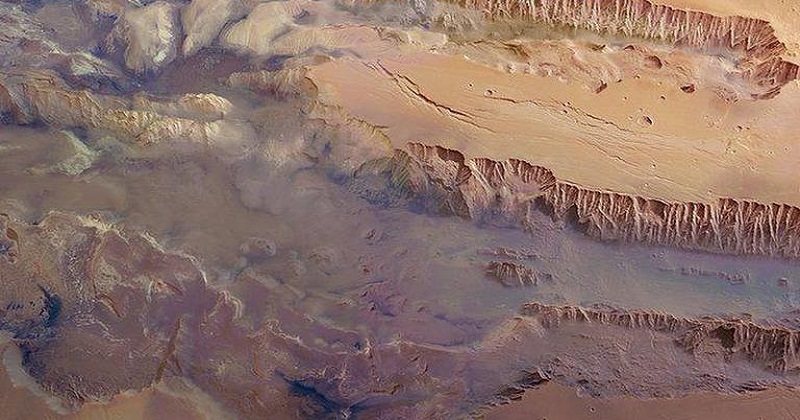
The European Space Agency said on Wednesday that considerable volumes of water has been discovered just beneath the earth in Mars’ Grand Canyon. The FREND (Fine Resolution Epithermal Neutron Detector) instrument aboard the ExoMars Trace Gas Orbiter (TGO), which orbits the red planet 400 kilometres above the surface, made the finding.
According to a statement provided by the European Space Agency, Igor Mitrofanov, the study’s primary author and FREND’s senior investigator said that water has been discovered in Valles Marineris, which is at the core of Mars’ dramatic canyon system.
It is worth noting that the TGO is orbiting Mars with the FREND neutron telescope, whose mission is to probe further and map the element of hydrogen in the top layer of Martian soil, which is an indication of water presence. As per experts, satellite data indicated that the water-carrying area is the size of the Netherlands and overlaps with the deep valleys of Candor Chaos, another canyon system region with water potential.
‘FREND revealed an area with an unusually large amount of hydrogen in the colossal Valles Marineris canyon system. Assuming the hydrogen we see is bound into water molecules, as much as 40% of the near-surface material in this region appears to be water’, Mitrofanov said. Furthermore, co-author Alexey Malakhov said that when the earth is dry, more neutrons are released. If FREND isn’t getting enough neutrons from a certain place, it is a sign that there is water in the soil.
Also Read: Nora Fatehi carried around on stretcher due to mermaid costume on sets, video surfaces
The found water might be in the form of ice or water that is chemically bonded to other minerals in the soil. However, experts did clarify that ice from areas other than the poles, particularly around the equator, does not stay stable since it evaporates owing to temperature and pressure conditions. Despite the scientists’ trust in TGO’s capacity to look beneath the surface, further observations are needed to establish the kind of water.

Post Your Comments